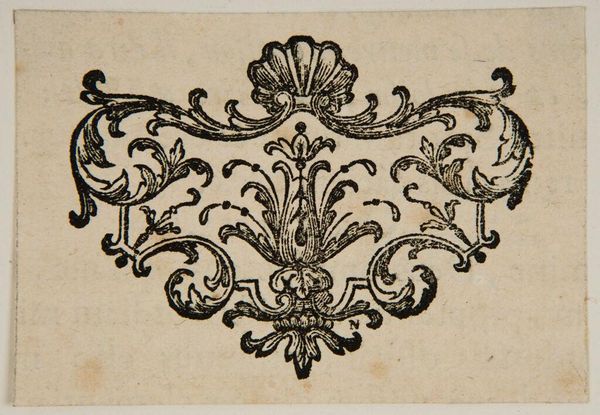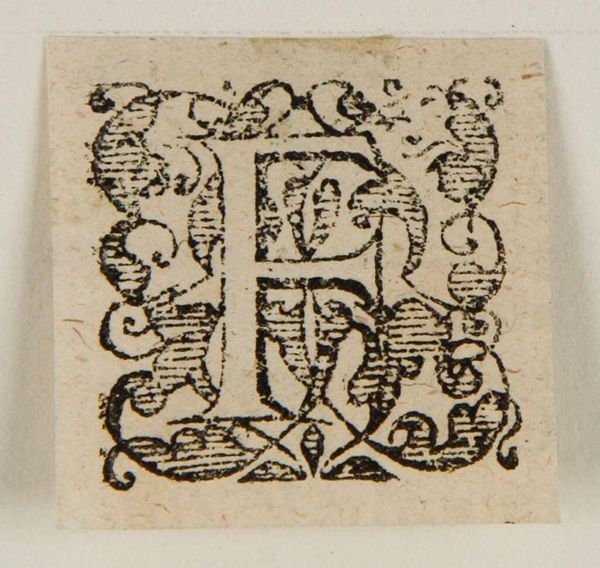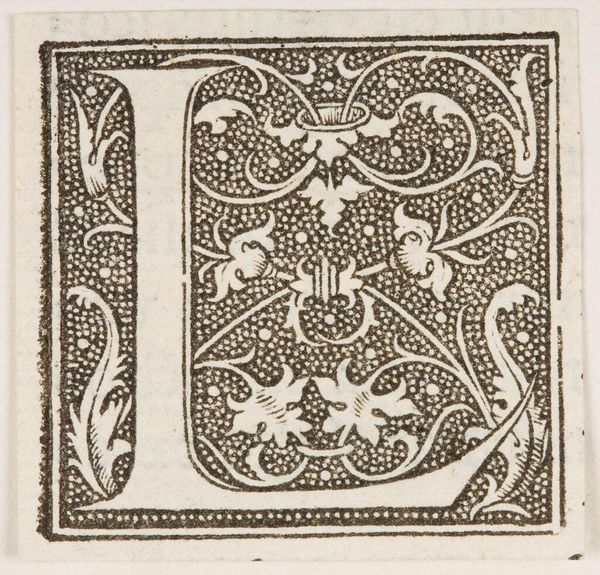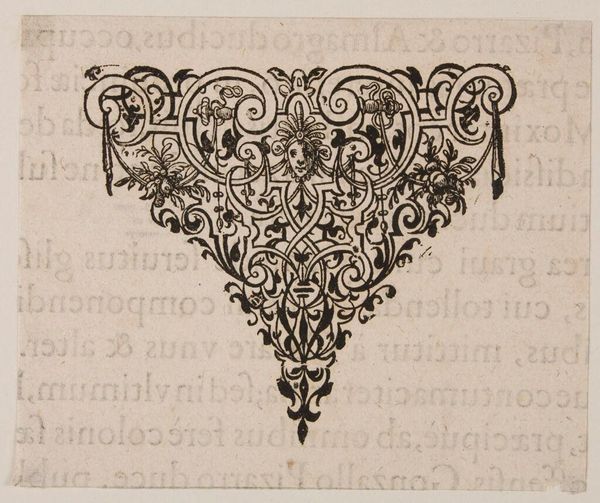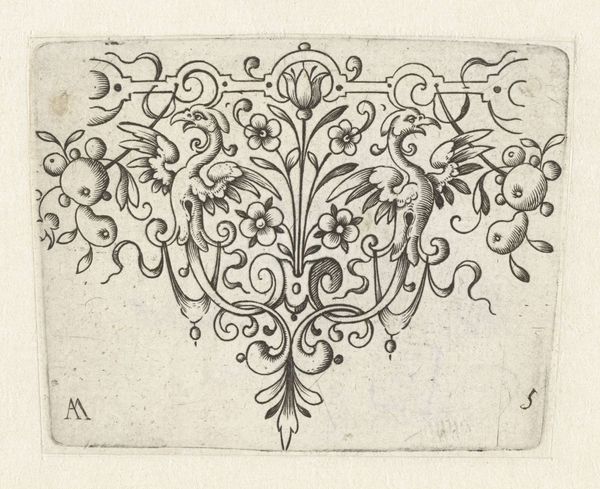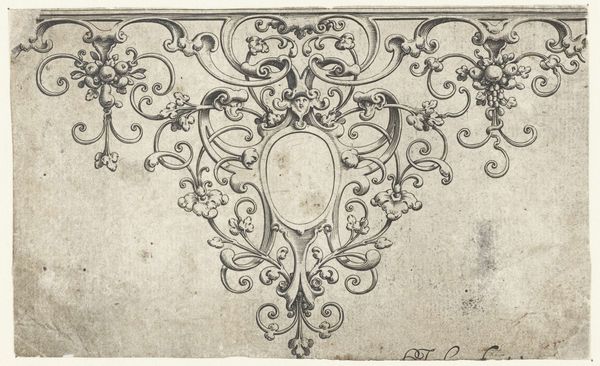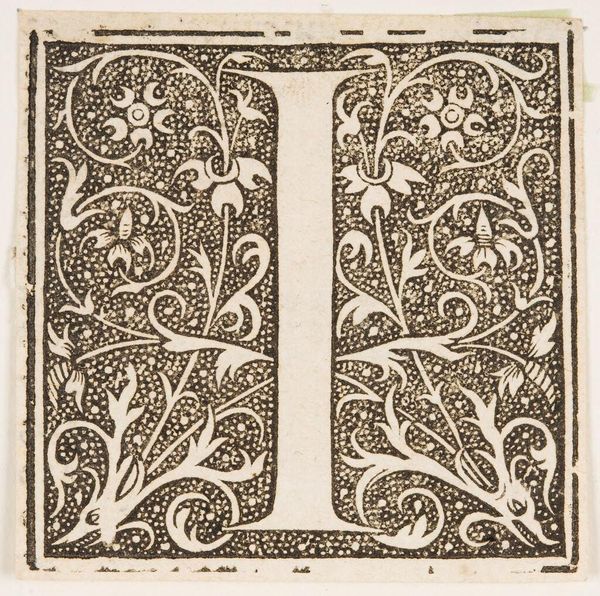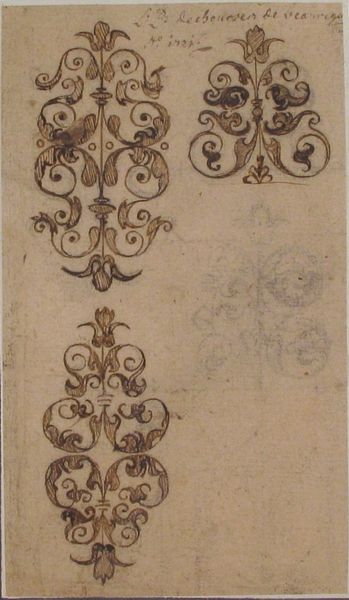
Copyright: CC0 1.0
Curator: This piece, simply titled "Head-piece," is held in the collections of the Harvard Art Museums, created by an anonymous artist. Editor: It's striking how intricate the design is. The symmetrical balance creates a very calming, almost meditative mood. Curator: Indeed. This kind of ornamentation in head-pieces was often used in printed books to mark divisions or decorate title pages. It signified status and care. Editor: The swirling motifs – the leaves and palmettes, all that black ink! – suggest an echo of older, perhaps even medieval, illuminated manuscripts. Curator: Absolutely. It's part of a long visual history, a link to the cultural significance of books and the power held within them. Editor: It makes you wonder about the context it originally lived in. How did this particular Head-piece affect readers’ interpretation of the book itself? Curator: Precisely. The politics of imagery are always at play, influencing how we perceive and understand the written word. Editor: It seems a small piece, but reveals so much about the values we place on knowledge and its presentation.
Comments
No comments
Be the first to comment and join the conversation on the ultimate creative platform.


